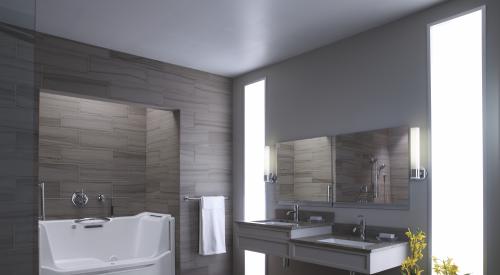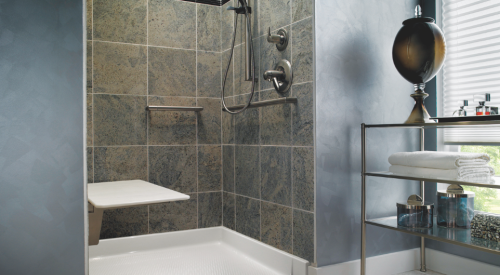You've heard it before: People want to age in place, make their home accessible to aging parents who may move in down the road or prepare for unexpected injuries or sicknesses. A recent social survey, in fact, said that there is a 40 percent likelihood that each of us will become "physically challenged" in some way in the future.
Whatever the reason, buyers are asking for homes that are more user-friendly for all family members, easier to maneuver in and flexible enough to accommodate changes. To answer that call, what a growing number of builders are doing is incorporating universal design elements into the homes they build.
This first article will take a look at universal design concepts and how they can be used in the overall design of a home, especially on the exterior. The second half, coming next week, will look at the interior of the universal design home-from wider hallways to flooring choices to fixtures. The third and final part of the series will look specifically at kitchens and bathrooms, as well as offer a checklist of universal design elements for any project.
Although there is no standard definition for universal design, everyone is pretty familiar with the concept. Universal design, put simply, is design that is usable by everybody, regardless of their level of ability or disability. A quick example: although handles on doors might seem insignificant, levers are much easier to maneuver than round knobs. That goes for almost everyone, including people with low mobility, arthritis sufferers, and children-or even just someone with his or her hands full.
When Jaime Gwinnell of Colts Neck, N.J., first contemplated starting her own building company, after having worked for other builders since the early eighties, she knew that she had to specialize to compete. In 1995, she launched Enhanced Living Builders, Inc., a high-end, custom-home building company with a special focus on universal design and green building.
She believes that everyone benefits from such universal design elements as wider hallways and doorways, varying heights of work surfaces and no-barrier access to entryways and showers, but stresses that such considerations, although not difficult, need to be a part of the plan from the very beginning. "I think universal design is just good design that you thought about well ahead of time."
Gwinnell also notes that these elements need not stand out or look like public handicap facilities, but rather should easily blend with other elements of the home to make a pleasing and functional home.
Her latest project, a $1.2 million home on the Shrewsbury River, does just that. Designed for a man who uses a wheelchair (who, during the planning of the home met and married a woman with no disabilities), the 7000 square foot home is perfectly suited to a wide range of needs and abilities. The key here is that most of what makes this home so accessible is virtually imperceptible and, in fact, makes the home much more functional for anybody.
As you approach the house, there is absolutely no indicator that the home might be anything other than a beautiful, custom home on the lakefront, which was exactly Gwinnell's goal. She said there was no need for ramps to mar the elevation or tip off would-be intruders that the homeowner might be an easy target. (The ramp is in the back, off the expansive deck, leading to the 150-foot floating dock built especially for the home's fisherman owner.)
The drive and entryway are slightly graded to be flush with the door-an interesting challenge since code dictated that water from the river behind the home had to be able to flow under it on three sides. The problem was remedied by boosting up the rest of the house, on the already raised site, with 150 pilings.
Gwinnell then balanced the look of the entry-way by adding a "stoop," complete with columns, a roof and low walls framing the sides. The big double doors look like wood but are actually maintenance-free steel, and are both accessible and elegant, matching the scale of the elevation perfectly.
In the second article of this series, we'll go inside our example house and look briefly at another to see how universal design concepts have been used for interiors.









